Mar 02, 2015
Les mélanines sont une large classe de biopolymères responsables de la pigmentation chez l’homme. Les mélanines les plus courantes sont l'eumélanine et la phéomélanine, toutes les deux censées protéger les cellules de la peau à l'irradiation UVB, réduisant ainsi le risque de cancer de la peau.
May 20, 2014
A major challenge for the study of laser-matter interactions at ultrahigh intensity is to find simple methods both to control these interactions, and to characterize them on very small spatial scales (micron) and temporal (femtosecond to attosecond).
May 16, 2014
One of the goals in physical chemistry is to follow reaction paths in details. Many techniques have been developed with studies conducted in cells, effusive or supersonic beams, using laser spectroscopy, mass spectrometry etc. as investigation tools.
Mar 26, 2014
Motions of the carbonyl group of the Photoactive Yellow Protein (PYP) chromophore have been investigated, for the first time, by femtosecond time-resolved circular dichroism (tr-CD) spectroscopy, in the near-ultraviolet spectral region. The quantitative analysis of the tr-CD signals shows that, upon excitation, the carbonyl group undergoes a fast (≪0.8 ps) and unidirectional flipping motion in the excited state with an angle of ca. 17−53°.
Nov 29, 2013
Le transport et la distribution de médicaments dans l’organisme sont des mécanismes complexes régis par de nombreux processus différents. Un rôle important est joué par les protéines de transport, responsables de la fixation et la libération des médicaments.
Mar 21, 2013
Many complex molecular systems absorb light in the UV spectral range, including those of paramount biological importance, like DNA bases or proteins. The excited states created by UV absorption are endowed with mechanisms of deactivation which are of major importance for the photochemical stability of these species. The majority of these processes are ultrafast and provide a rapid and efficient way to dissipate the electronic energy into vibration, thus avoiding photochemical reactions.
Dec 12, 2012
Ionized molecules are involved in many chemical reactions, and participate for an important part in the chemistry of the upper atmosphere and interstellar clouds. Data on the vibrational spectroscopy of these ions are thus needed to better understand the dynamics and energetics of so diluted matter.
May 31, 2012
The description of the interactions controlling the shape of a protein is crucial in understanding the cellular mechanisms, but is still difficult to achieve on biological systems because of their complexity.
In this context, the use of model molecules makes accessible to experiments many biological problems lying at the heart of current societal issues. Gas-phase IR/UV spectroscopy of small peptides is an outstanding example.
Sep 24, 2011
Contact CEA : Pascal Boulanger
A decade after their first synthesis in the laboratory, carpets of aligned carbon nanotubes (CNTs) are being considered in many fields of applications (filtration membranes, passive and active electronic components, composite materials,..) combining CNTs’ individual properties and nano-structuration. But the development of these applications requires a safe, inexpensive process that is applicable over large areas.
Mar 25, 2011
Les irradiations aux rayons ultra-violets A (UVA) sont connues pour être à l'origine de cancers de la peau. En considérant une molécule d'ADN modèle, les chercheurs du Laboratoire Francis Perrin (CNRS/CEA-IRAMIS, à Saclay) en collaboration avec un laboratoire du CEA-INAC, à Grenoble, ont exploré la façon dont les UVA agissent directement sur cette molécule complexe.
Sep 21, 2010
By comparison with experimental data obtained specifically for this purpose by scientists of IRAMIS / SPAM, it is possible to select the best ab initio method able to give the parameters of "force field" models to faithfully reproduce the structure of assemblies of atoms, as complex as proteins (macromolecule composed of amino acids) or peptides (small polymers of amino acids, n <50).
Nov 13, 2007
Contact : Lionel Poisson (LFP) et Richard Taïeb (LCPMR-Paris VI)
Clusters consists in a set of several up to million atoms in condensed phase with nanometric finite size. The investigation of their properties as the function of their increasing size is sometimes presented as one way to build a macroscopic condensed world from a gas.
Mar 23, 2007
V. Brenner, F. Piuzzi, I. Dimicoli, B. Tardivel, and M. Mons
One of the great mysteries of life is its lack of symmetry at the molecular scale. Many biological molecules, like amino acids, exist a priori in two asymmetrical forms, "right” and “left”. Such molecules are referred to as “chiral” . Like the two hands, these forms cannot be superimposed but are mirror images of each other (Fig.). However, in living organisms, proteins are exclusively built up from “left” amino acids.
Mar 16, 2007
J.M. Mestdagh, L. Poisson, I. Fischer, P. D’Oliveira
Service des Photons, Atomes et Molécules DRECAM/SPAM
Service des Photons, Atomes et Molécules DRECAM/SPAM
The very new laser of the "Plateforme Laser Femtoseconde Accordable, PLFA" began to be installed last year within the Service of Photons Atoms and Molecules (SPAM). It belongs to the infrastructure SLIC, member of the European network LASERLAB-EUROPE and is thus accessible to European scientists.
May 22, 2006
D. Markovitsi, T. Gustavsson, E. Lazzarotto, S. Marguet, D. Onidas, F. Talbot
Laboratoire Francis Perrin, CEA/ DSM/DRECAM/SPAM-CNRS URA 2453 F-91191 Gif-sur-Yvette, France
Tous les médecins nous mettent en garde contre les expositions sans protection au soleil pouvant provoquer coups de soleil, mais aussi à long terme, cancers de la peau.
Jan 13, 2006
W. Chin, M. Mons, F. Piuzzi, J. P. Dognon, I. Dimicoli, B. Tardivel
SPAM / Lab. Francis Perrin (URA CEA-CNRS 2453), CEA Saclay, 91191 Gif-sur-Yvette Cedex, France
Les protéines, molécules indispensables à la vie des organismes vivants, sont des polymères synthétisés à partir de l’ADN des cellules. Leur fonction dépend de leur constitution mais aussi de leur structure.
Oct 12, 2004
E. Gloaguen1, J.-M. Mestdagh1, L. Poisson1, J.-P. Visticot1 ,B. Soep1,M. Coroiu2, A. Eppink2 et D.H. Parker2
1Laboratoire Francis Perrin (CNRS-URA-2453), DSM/DRECAM/ Service des Photons, Atomes et Molécules, C.E.A. Saclay, F-91191 Gif-sur-Yvette Cedex, France
2 Department of Molecular and Laser Physics, University of Nijmegen Toernooiveld 1, 6525ED Nijmegen, Pays-bas










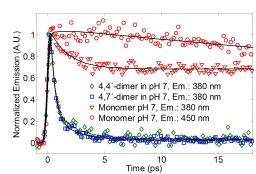

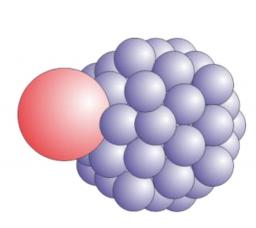
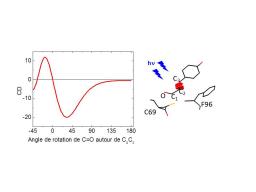
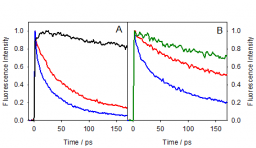
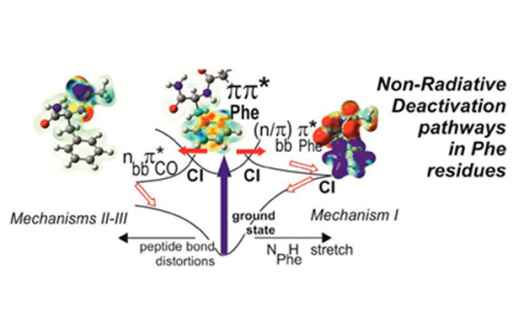

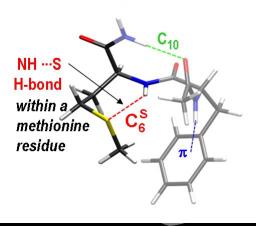

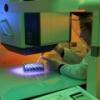

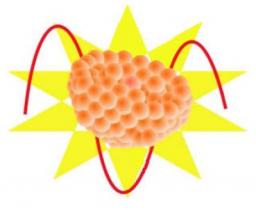
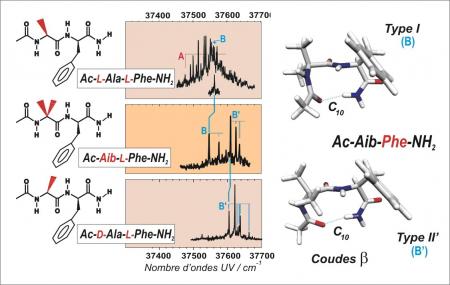
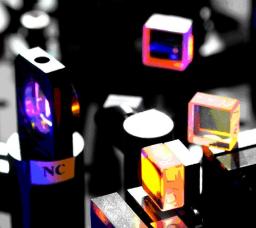
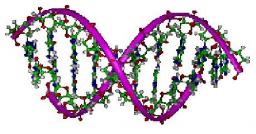

![Participation d'un état de Rydberg à la redistribution ultrarapide de l'énergie électronique du TDMAE [tetrakis(diméthylamino)éthylene]](https://iramis.cea.fr/Images/astImg/mr_972_1.jpg)